#extrasolar fauna
Text



Ceratopillar variants, or at least realistic models thereof. Midjourney V6
#ai beasties#caterpillar x ceratopsian hybrids#arboreal dinosaur larvae#panspermic chimerae#extrasolar fauna
3 notes
·
View notes
Text


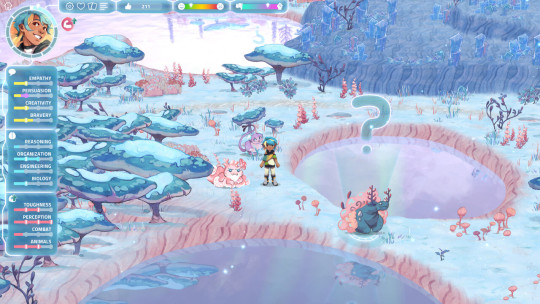
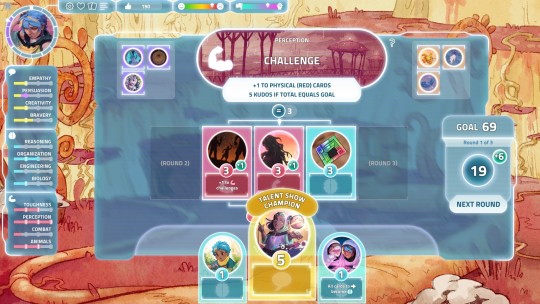

I Was a Teenage Exocolonist
Release date (Nintendo Switch, PS4, PS5, Windows, Mac OS, Steam)
English: August 25th, 2022
"Growing up in humanity’s first extrasolar space colony means navigating a new world full of wonder, danger, and beauty. Explore the wilderness, study, fall in love, discover strange creatures, and deal with the consequences of your actions. Your choices will directly affect the lives of your friends and the fate of the colony. What kind of world will you help make? Will you survive to enjoy it? Why do you remember doing this before?
You have your whole life ahead of you. Will you spend it studying in school, or diving into the intriguing flora and fauna of this new world? Will you introduce space-age technology, or live in harmony with nature? Will you battle massive beasts, or nurture future generations? Realized in brilliant watercolor, the world of Vertumna is yours to explore."
This is a visual novel by Finji which features other gameplay elements such as stat-raising, adventuring, and deck-building with strategic card battles / puzzles. There are 10 dateable characters.
You can buy it from itch.io here, from Steam here, from the Nintendo Store here, or from the Playstation Store here!
#i was a teenage exocolonist#visual novel#finji#stat raising#teenage exocolonist#card game#amare#gender choice#bi#non binary#poly#commercial#windows#mac os#steam#nintendo switch#ps4#ps5#atypical art#sci fi#science fiction
67 notes
·
View notes
Note
Haahahhaa
i saw your message and was going to talk to you seriously about your slugcat but
gunpowder covered field?
What were you ancients on when they named you
gunpowder?
Doesn't violence keep you from ascending?
Why would they name you that
-eternal anomaly
(Ooc: if ea gets too mean get tell me and ill stop but also don't be afraid to be mean to them)
GCF: The Ancients wanted to ensure we would achieve a solution.
GCF: This means some preparation for if threats arise, whether that be due to evolution of fauna and flora,
GCF: or other, more unpredictable, extrasolar threats.
GCF: Have you ever been hit with a meteorite?
GCF: No?
GCF: You're welcome for the point defense.
GCF: As for the Slugcat, it's intelligent enough.
GCF: It also didn't try to kill my Overseers on sight, unlike certain other creatures I could mention.
// No worries. In character, be as mean as you like.
18 notes
·
View notes
Note
Any tips on creating a planet that is 100% ocean. Yes, there are lots of rocks and mountains but none break the surface. The planet has a moon too. I've got to think of atmosphere, storms, earthquakes, gravity, tides, flora and fauna, etc...
Saphira:
Step 1. Trim the Fat.
Think about your project. If its a novel, think about your plot line and characters. If its a game, think about your End Goal and mechanics. The places you want to work on first are where the experience meets the world. What characters are important (where would you want them to be?) Start there. If you start with "oh god how does the moon affect tides") then you're going to be halfway through a box of Oreos and a gallon of Kool-aid before the hour's done. Don't do it to yourself.
Step 2. Envision the Ideal
Chances are that when you chose this environment, you had an idea in mind. It might have been the mental image of a coral reef, or the love of Disney Mermaids, or how unfathomably insane sea creatures can be. Go back to that. What about it got your attention? What about it got your imagination going? "I want to live in that much colour." "I could have done a better job than Disney in representing Ariel's life." "I love the horror of Earthly Sea Aliens." Write it down. Pin it up. Put that in the center of your world building graphs. That's the heart. Tether everything to that.
Step 3. Research
Start from your Chart Heart. Take that Step 2 concept and start your research there. Research what Disney studied to make their world, or how coral reef biomes work, or the “Top Ten WTF is That Sea Animals”. Whatever it is. Then let the research web flow. You'll find something interesting. Read about that too. If you're getting something really exciting, see if you can find another reliable source for it. Write down your web of research around your Chart Heart. Jot down exciting details. Be careful. You can get utterly lost in this phase. Remember to come up for air, food, water and socialization.
Step 4. Connect the Dots
Your notes on your research will paint a picture. It will paint an idea. The notes, the chart you've made, will start to take on life and character. Put the research down and take a good look at your notes. If they're good inspiration points, they will start to tell you what your world is. You may start to see ecosystems. You may start to see mythology. You may see challenges for your characters to come across. Important: once you have started to get into the groove of your notes, bring back up your Project Plan from Step 1. Your narrative and your world need to work as one. As you go over the notes, go over your plot. Jot down or highlight points where the world and the plot REALLY GO TOGETHER. Celebrate those points!!
Step 5. Do it again
Yup! It's a cycle. Take your winning points of your world that really resonate with your plot. Make those the hearts of your new charts. Start research again. Make notes again. Connect the dots again. The point of world building is to provide a more living experience. Do not let the mechanics of your world building get in the way of your audience's experience. Also, have fun with it.
Tex: I'm gonna make a lot of assumptions here that you might think are superfluous, but they're important to narrowing down topics to what I think you're presuming.
When you say "100% ocean", you mean something along the lines of "surface covered with liquid water", yes? This is a surprisingly rare phenomenon in astronomy - Earth is the only planet that we know of to contain not only water on its surface, but liquid water that is stable and in significantly large quantities.
There are several celestial bodies that are very close to these parameters: Europa has a water-ice crust; Enceladus is covered by more solid ice than Europa; Ganymede is a mixture of water ice and silicate rock; Callisto has a surface composed of "water ice, carbon dioxide, silicates, and organic compounds". While their surfaces technically contain water, it's in a solid or mostly-solid form that's inaccessible for use to most life forms.
There are two main theories of how water comes to be on a celestial body, extraplanetary and internal. Extraplanetary sources rely on "Comets, trans-Neptunian objects, or water-rich meteoroids (protoplanets)" (Wikipedia), which impart only so much water due to factors such as the body's gravity and water-containing or water-inducing objects on a collision path with the body. It's not a particularly common method for producing water on a body's surface, unfortunately, and makes up a non-majority percent of surface water.
Internal water is both a more popular idea and a more common occurence. A liquid water ocean beneath the crust is possible, as in the cases of Dione, Pluto, Triton, and Ceres.
Frozen water, as in the case of ice, could be either purely water, or water and silicates (see: hydrate minerals ). It's possible that radioactive decay could have pushed subsurface water up, where it could have melted into liquid water and formed bodies of water such as oceans - this is especially possible if ammonia is present (Wikipedia). The heating of aluminum-26 could provide enough heat, also to force water to the surface (Phys.org), which brings up the important point that there needs to be enough heat for the water to remain a liquid.
For a body that contains water ice and is composed of primarily silicates, the contact of water with silicates will provide the hydrothermal and chemical energy to not only turn the ice into liquid water but also to maintain a temperature necessary to stabilize bodies of water as liquid. Radioactive decay as mentioned previously, tidal heating, and cryovolcanic activity all participate in the introduction and maintenance of surface water.
It is, admittedly, more difficult to find liquid water on the surface of an extrasolar planet, mostly because the "free" heat of the closest star is an easy way to defrost a celestial body. It's possible, but that would mean a greater reliance upon the internal heating and radioactive decay of the body itself, something that doesn't always pan out.
To elaborate on the idea of geological features of your planet, mountains are a function of tectonic activity and/or volcanic activity, and an indication of how active the core is of your planet. The higher the mountains, generally, the more active. Rocks are formed from pressure, magma, or a combination of both (Wikipedia), wherein mountains are usually metamorphic (Wikipedia). If you decide upon how your planet's surface water came to be, it'll feed into how your landmasses are created, as well as how high they'll generally be. I do recommend reading up on geomorphology, too.
Further Reading
Extraterrestrial liquid water - Wikipedia
Ocean planet - Wikipedia
Origin of water on Earth - Wikipedia
Hydrology - Wikipedia
Water - Wikipedia
Nebular hypothesis - Wikipedia
Ocean Currents and Their Role in the Biosphere by A.Ganopolski (chapter preview)
Insights into global diatom distribution and diversity in the world’s ocean by Shruti Malviya et al. (PDF)
Grazers and Phytoplankton Growth in the Oceans: an Experimental and Evolutionary Perspective by Simona Ratti et al. (PDF)
Life (Cells) - Wikipedia
Biota by sea or ocean - Wikipedia
Marine Biota Exchange — The Biologic Pump - EARTH 103: Earth in the Future, Penn State University
Synth: Okay, yes, you do need to think about all of that eventually, but it doesn’t all have to be at once. Some things will follow logically after others.
Tides do affect ocean currents to an extent, but so far I haven’t found anything that gets into how they might affect the flow of deeper currents, instead of just the shallower areas. Tidal effects are most noticeable along shorelines, so if all of your “land” is very deep under the water, you might be able to get away with not dealing with this at all.
Being in the water is the closest we can come to a microgravity environment without leaving the ground, so, again, you can probably get away with filing gravity under "I'll deal with this later". (Did you know that gravity isn't uniform across the planet? You'd think it would be the same all over, but no. There are high spikes and weaker spots and all kinds of variations. It's wild.)
Undersea earthquakes and volcanoes could definitely cause problems for your marine inhabitants, although earthquake-spawned tsunamis tend to ruin the day for land-dwelling organisms way more than they do for ocean-based critters.
Yeah, you will need to figure out atmosphere, but at this point just having one is the important bit. Prevailing wind direction plays a large part in the flow of surface currents, but the composition of said atmosphere can take a back seat for the time being.
Get your planet and decide which direction it rotates. Looking at maps of prevailing winds and ocean surface currents shows how the Coriolis effect from the planet’s rotation comes into play, affecting the direction of both the air and water currents: they travel predominately clockwise in one hemisphere, and counterclockwise in the other.
Then it’s on to topography.
Tex had a bunch of suggestions to look into for planning your world's geologic formations. Lay out your geography, your valleys and mountains, shallows and trenches just as if it was above sea level. The “normal” rules for placing settlements on land (waterfront real estate is The Shit), kind of goes out the window for a completely submarine world, but it isn’t time to think about building cities yet anyway.
So you’ve got your landscape. Now submerge it. Decide just how far under the surface your highest points will be.
The nice thing about water and air is that they're both fluids, and they behave similarly when they encounter obstacles like, say, massive mountain ridges. If air wasn't transparent we would be able to see how it eddies and flows around objects the same way water does. Well, to an extent we can sometimes see it, when it picks up bits of detritus and blows it around. Wind tunnels pump in streams of smoke to make the airflow visible.
https://www.ventusky.com/ and https://www.windy.com/ are great for visualizing air currents. Not quite so good for water currents, but the "Waves" tab does provide a little bit of info to build off of. It's fascinating to see how wind at 10 metres above ground mostly follows the lay of the land, while wind at 1000 metres easily flows into low-lying areas, but does a hard stop at the Rockies and the Andes (and a few other places), and winds at 30000 just don't care about paltry geographic barriers like mountain ranges. The ocean currents on your planet will, to an extent, behave similarly in how they interact with the landscape, e.g. being deflected by very tall mountain ridges.
Airflow is the predominant driving force for the surface currents, but what about everything below that? Terminology to research deeper here are thermohaline circulation and hydrothermal circulation. Hydrothermal circulation is most apparent around the ocean floor near volcanic activity and deep-ocean hydrothermal vents (“black smokers”) and occurs due to temperature differences. Thermohaline drives pretty much everything else, and occurs due to changes in temperature (thermo) and salinity (haline). The motion of these major currents is vital to the submarine ecosystem, since it’s the main way nutrients and heat energy are transported (fun – and maybe slightly gross – fact: the abyssal depths of the ocean are subject to a constant “snow” of dead things and assorted other organic detritus sinking down from the higher levels. It’s an important food source down there).
Knowing how the oceans move on your planet will help with placing settlements, if your planet’s inhabitants have gotten to that point. On land cities often start near water sources, but obviously. when you already are underwater, that will change. Food sources and shelter (from predators, from too-strong currents) are still points that need to be considered. Who settles in the shallows, where the water is warm and sunlight allows for photosynthesis? What about deeper down, where several currents meet to create a good place for eating? Maybe it’s all chemosynthesis near deep-ocean fumaroles instead?
For flora and fauna, ooh lordy you have, like, so many options. So. Many. For inspiration just look at all the wild and wacky and downright creepy stuff that lives right here on our planet, especially the deeper regions. Some of it you’d swear was 100% alien in origin, but nope, born and bred right here on good ol’ Earth, where it seems like the deeper you go, the weirder the living things become.
https://en.wikipedia.org/wiki/Physical_oceanography has more ocean phenomena and terminology (scroll all the way to the bottom to find it organized by category), to get familiar with and research.
188 notes
·
View notes
Photo

(A table of contents is available. This series will remain open for additional posts and the table of contents up-to-date as new posts are added.)
Part of Fifteen: Further Research and Resources
AKA What Pear Read To Write This Series
I read a lot of stuff in preparation for writing this series of posts. Researching and writing each post usually took about 3-5 hours. Here's most of what I read and watched, though admittedly not all of it, and yes, I did go out and read some very basic, elementary-school-level things sometimes to make sure I wasn’t misremembering things or misrepresenting them.
My biggest suggestion is: When in doubt, go to Youtuber Artifexian. He goes through all the math and how it’s related to what, and even has conlang and calendar creation videos. You’ll see him pop up a lot on these lists.
For hard sci-fi writers looking for all the math equations, go through the video descriptions for the Artifexian videos linked below. He explains what each equation means and why you should bother with it.
Solar Systems:
Formation of the Solar System from Artifexian
Solar System Tutorial
Creating a realistic world(s) map - planetary systems
Other Planetary Systems from Artifexian
How to Create a Classical Planetary System from Artifexian
Stars:
Stars from Nasa’s StarChild
The Sun and Other Stars from BBC
Star Types from Enchanted Learning
How to Build a Star from Artifexian
Multi-Star Systems:
Can there be more than one star in a solar system, and if so how would it work?
Modelling a multi-star system with numerous planets and moons
Introduction to Multiple-Star Systems from Artifexian
What Are Multiple Star Systems from Universe Today
How Do Multiple-Star Systems Form? from Phys.org
Alien Planets With Extra Suns Can Have Strange Orbits from Space.com
Planet ‘Reared’ by Four Parent Stars from Nasa
Planets:
Discovering Planets Beyond: How Do Planets Form? from Hubblesite
What Kinds of Planets Are Out There? from Nasa
List of Planet Types
Dwarf Planets: Science Targets from Nasa
Building Dwarf Planets from Artifexian
Building Gas Giants from Artifexian
Gas Giant Myths from Artifexian
Extrasolar Gas Giants from Artifexian
Building Terrestrial Planets from Artifexian
The Trouble with Terrestrials from Artifexian
The Habitable Zone:
The Habitable Zone from PennState’s ASTRO 801 course
Planetary Habitability
Orbits:
What is an Orbit? from Artifexian
Building Gas Giant Orbits from Artifexian
Building Hot Jupiter Orbits from Artifexian
Building Terrestrial Planet Orbits from Artifexian
Building Gas Giant Moons from Artifexian
Building Terrestrial Planet Moons from Artifexian
Asteroids:
What is the difference between a meteor, a meteoroid, a meteorite, an asteroid, and a comet? from Hubblesite
Asteroids: Fun Facts and Information About Asteroids from Space.com
The Kuiper Belt from Nasa’s New Horizons
Planetary Considerations:
Seasons:
Interplanetary Seasons from Nasa
Weather, Weather, Everywhere? from Nasa (yes, the images are broken, but the information is still there)
Tidal Locking
Axial Tilt from Artifexian
Day/Night Cycles:
What Causes Day and Night? from Universe Today
How the Earth Works: Night and Day from howstuffworks
Rotation of Planets Influences Habitability from Astrobiology Magazine
Solar/Sidereal Days from Celestial North
Surface Features:
Terrestrial Planet Geology from the University of Colorado Boulder’s Labratory for Atmospheric and Space Physics
How Do Planets Evolve? from Earthbound
Skies:
Why is the sky blue? from Nasa’s Space Place
Why do the planets have different colors? from Cool Cosmos
Could the sky on a planet theoretically be any color?
Why does the sky change color?
Why is the sky never green?
Life in Space:
Living in Space from NASA
Life in Space from Space Station Kids
What’s It Like to Live in Space? from LiveScience
What it’s REALLY like to be a NASA astronaut living in space for a year from BusinessInsider
Astronauts Answer Student Questions from NASA’s FAQ series
How Do Astronauts Go To the Bathroom in Space? from LiveScience
Astronaut Tips: How to Wash Your Hair in Space from the VideoFromSpace Youtube channel
Health in Space:
The Human Body in Space from NASA
What Happens to the Human Body in Space? from Smithsonian Magazine
The Health Risks of Space Travel from Healthline
Working in Space:
Repair in Space from iFixit.org
7 Things You Always Wanted to Know About Spacewalks from National Geographic
Progressing Toward Interstellar Travel:
The 12 Greatest Challenges For Space Exploration from Wired
10 Technology Innovations Needed For Deep Space Exploration from Science Channel
How Humans Could Go Interstellar, Without Warp Drive from Discover
Artificial Gravity’s Attraction from Aerospace America
Generators:
Planet Generator
Donjon Fractal World Generator
Space Engine Universe Simulator software
Additional Resources:
Fantasy World Building: Star Systems and Other External Influences
Worldbuilding Links and Software (an extensive list of calculators and generators and extra reading for hard sci-fi)
Worldbuilding (more links to various research including physics, cosmology, geography, natives, flora, fauna, and culture)
World Generation: Generic System & Planet Building Resources (a literal book)
Further discussions on planet-building
Literal Books From My Childhood:
(Yes, I understood they were outdated in some areas.)
National Audubon Society First Field Guide: Night Sky
The Universe from Life Nature Library
Planets from Life Science Library
If there’s a topic I didn’t cover or that you’d like to see more on, feel free to drop in a request for it and I’ll work on adding it. These series are always open to additions, and those topics can come from you!
1K notes
·
View notes
Photo



Early June Panspermids via Midjourney 5.1
TOP: Hummingbee
MIDDLE: Dracofly
BOTTOM: Stomatopotamus
#hummingbird#orchid bee#draco lizard#lanternfly#hippopotamus#stomatopod#alligator bug#fulgora lanternaria#hippo#mantis shrimp#hybrid#panspermic chimerae#extrasolar fauna
9 notes
·
View notes
Text

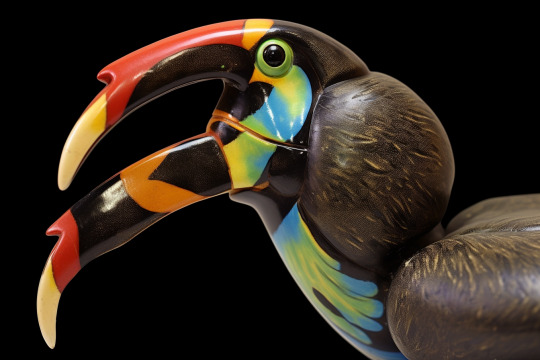
AI reboot of the Teleoucan, plus a native ceramic figurine depicting some species of same. Midjourney 5.2
#alien toucan#panspermic birds#extrasolar fauna#or possibly a relict superciv bionstruct#in which case bioaztech switchblade toucan
3 notes
·
View notes
Photo
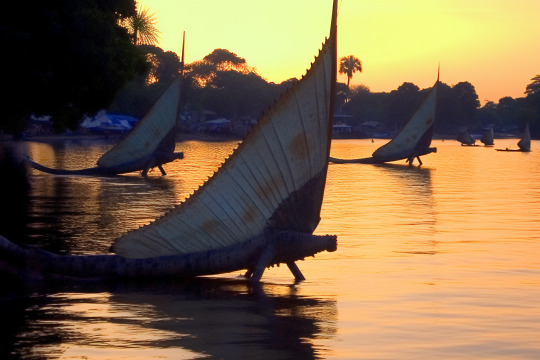
Tripodal saildragons emerge from the forest at dusk to begin their nightly foraging.
6 notes
·
View notes
Text






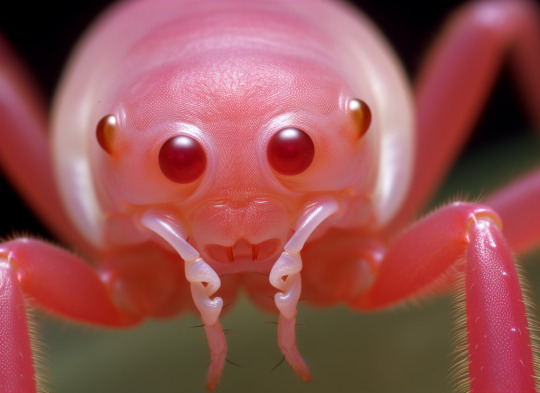
Spider monkeys, plus a monkey spiderling. The palps are resorbed as they mature.
Midjourney 5.2
#ai#primate arachnid hybrids#panspermic chimerae#extrasolar fauna#yeah I know spider monkeys are real animals that don't look like this#uakari#crab spider
1 note
·
View note
Photo
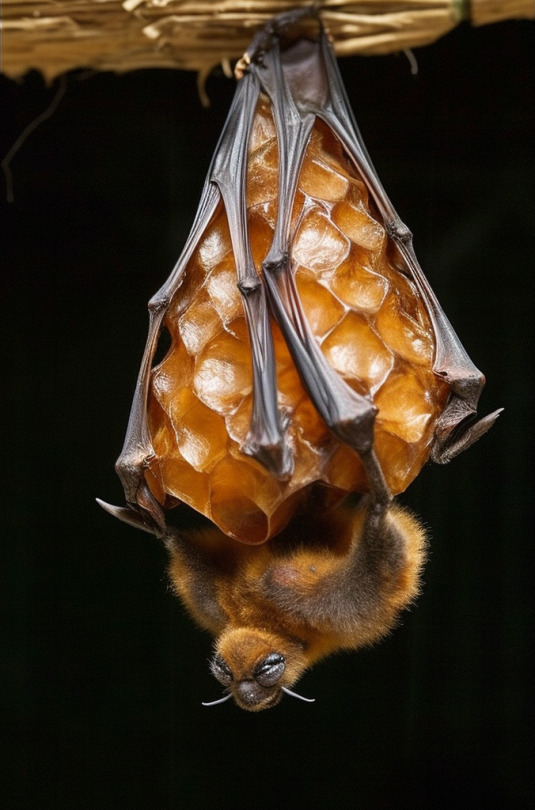






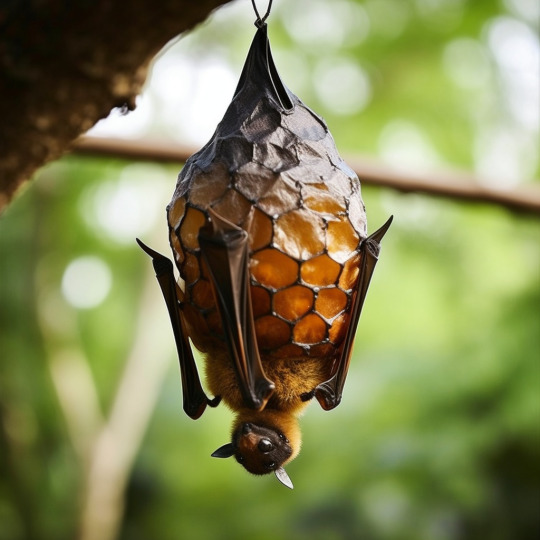

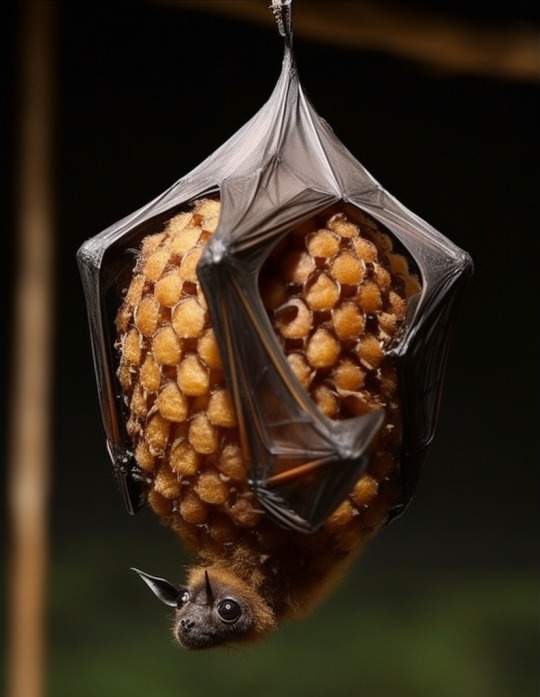
Panspermic honey bats. Though their life cycle and ecology is poorly understood, they are nevertheless frequently reared by colonists for their sugar-rich secretions.
1 note
·
View note
Text
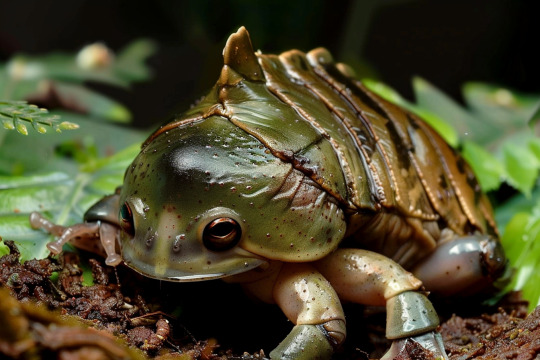

Rainforest isofrogs. Isophrods...? Midjourney 6.
#ai armadillidiidae arthrophibians#isopod x frog hybrids#crustacean x amphibian chimerae#woodlice pill bugs potato bugs sow bugs roly polies#panspermic and extrasolar fauna
11 notes
·
View notes
Text



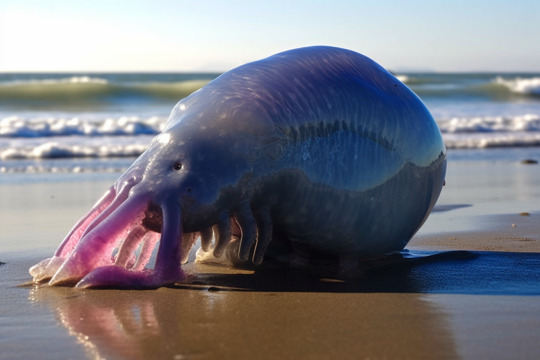

TOP: Beached jellywhale, dead but still dangerous. Even if you survive the sting, you'll be haunted by whale songs in your dreams for the rest of your days
MIDDLE: Scotoplanipeds, the amphibious sea hares
BOTTOM: Alternate cuttleseal (q.v.), holothurian rather than cephalopod-derived
Midjourney 5.2
#jellyfish#echinoderm#pseudo-pinnipeds#seal analogs#chimerical hybrids#alt-timeline fauna#panspermic extrasolar wildlife#extraterrestrial aliens#terrestrial aliens
26 notes
·
View notes
Text
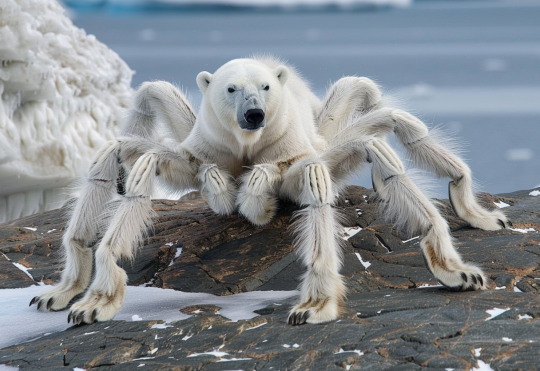


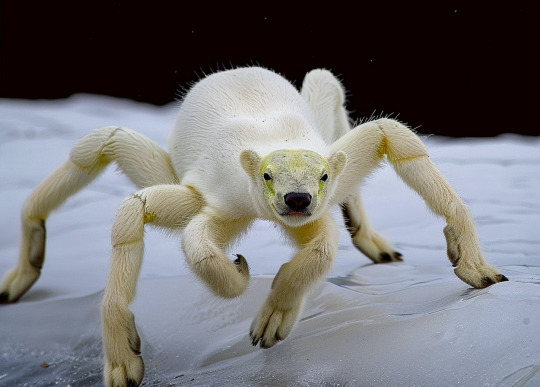
Arctic spiderbears, POSSIBLY distant panspermic relatives of the Gnoph-Keh. Midjourney 6
#chimerical ai aliens#vertebrate x arachnid hybrids#tarantula spider x polar bear hybrid#panspermic extrasolar fauna#lovecraft and spiders and bears oh my
7 notes
·
View notes
Text
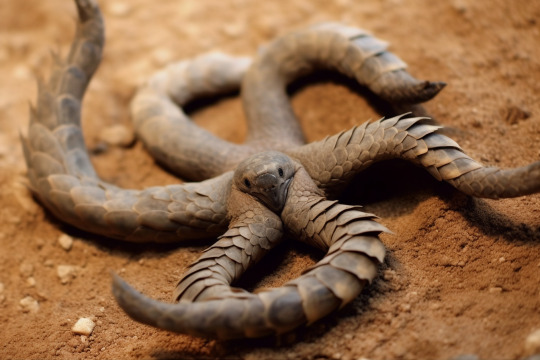
Radial viper tortoise. Midjourney 5.2
#ai desert fauna#tortoise#snake#starfish#panspermic reptile echinoderm hybrid#chimerical extrasolar wildlife
8 notes
·
View notes
Text
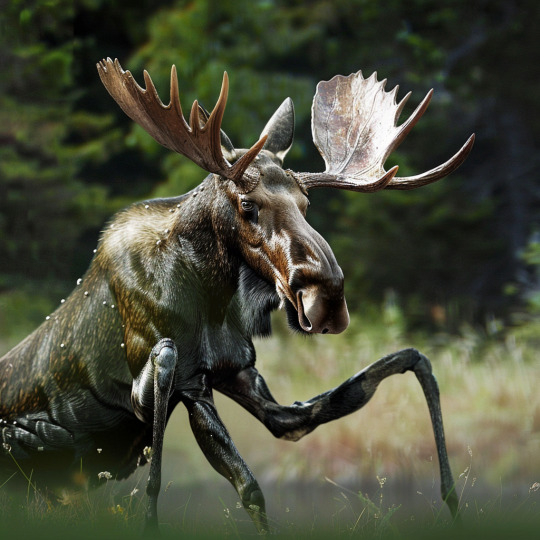
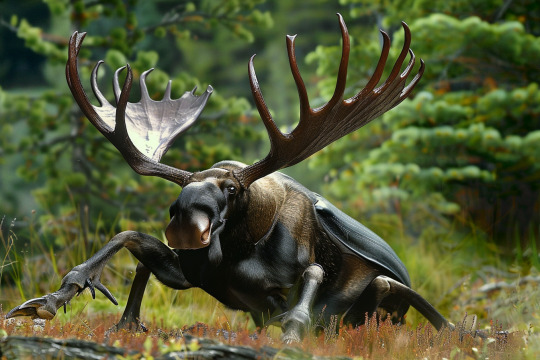
Beetlemoose, panspermic relatives of the beetle stags, Midjourney 6.
#chimerical ai aliens#beetle x moose hybrids#insect x artiodactyl hybrids#arthropod x mammal hybrids#temperate extrasolar fauna
6 notes
·
View notes
Text

Cothurnocystis gecko, often mistaken for an earwig or owlfly gecko by exozoological dilettantes. Midjourney 6
#happy ai easter#echinoderm x reptile hybrid#stylophora x lizard hybrid#asymmetrical panspermic chimera#lopsided extrasolar fauna
5 notes
·
View notes